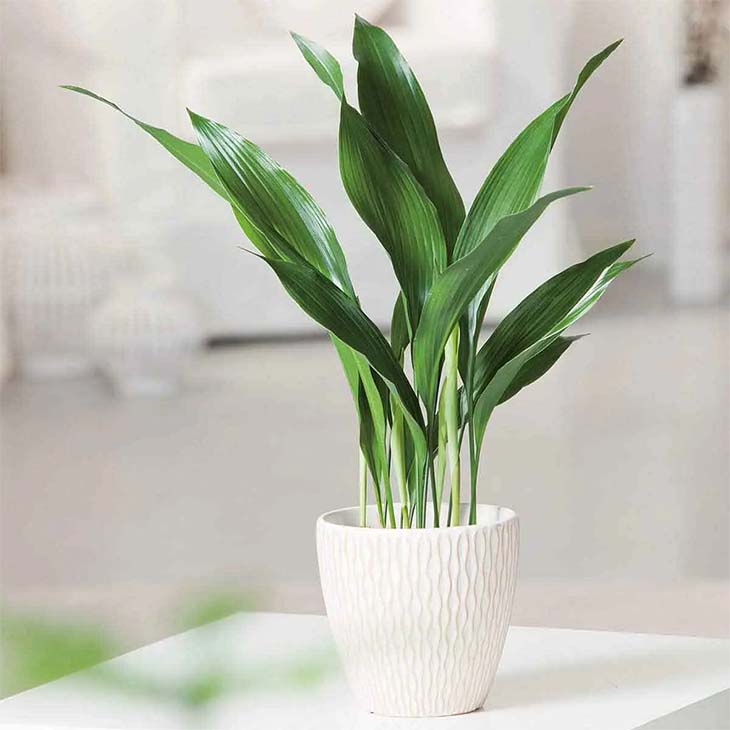Indoor plants are very useful for decorating the house, and sometimes even for purifying the surrounding air. Even if you don’t have a green thumb, you can brighten up your interior with decorative foliage plants, as long as you choose them that are resistant and easy to maintain. Check out these plants that are easy to grow and don’t wilt easily.
Even if you don’t have a green thumb, don’t deprive yourself of the benefits of indoor plants. Certain varieties are in fact easy to maintain and, moreover, resistant.
What indoor plants are resistant and easy to care for?
If you want to add color and greenery to your interior, here are plants to grow at home that are easy to maintain.
Epiphyllum Ackermannii, Easy-care plant

Epiphyllums are cacti belonging to the Cactaceae family. The genus Epiphyllum has 20 different species, which grow in warm, humid forests. Moreover, these succulent plants are among the rare cactaceae to appreciate a humid environment. Among the varieties of Epiphyllum that are easy to maintain, we find Epiphyllum ackermannii. This perennial plant with evergreen foliage is characterized by flat hanging stems, with edges cut into rounded teeth, that is to say crenellated. Also known as orchid cactus, epiphyllum ackermannii is a resistant plant and easy to grow. Since it is a succulent plant, the orchid cactus does not need to be watered daily. Frequent watering could even cause it to rot. Also avoid letting water accumulate on the stem side. These could rot. Give your plant partial shade and keep it away from heat sources like radiators . Concerning the substrate, you can use that for cactus, or use a mixture of dead leaf litter and sand. When the first buds appear, fertilize your indoor green plant every 15 days with a cactus fertilizer until the end of the flowering period.
Epiphyllum Anguliger, Easy-to-maintain decorative plant

Also called zigzag cactus, epiphyllum anguliger is another easy-care variety, from the Epiphyllum genus. This plant gets its name from its crenate succulent leaves. Indeed, the edge of the leaves, cut into elongated teeth, gives the plant a zigzagging appearance. The zigzag cactus can be grown indoors or outdoors. Like all cacti, it only needs a little water. On the other hand, remember to water it regularly in summer, but only when the soil becomes dry on the surface. Be careful not to leave any stagnant water in the saucer or planter. Also, keep your plant in a bright location, but out of direct sunlight. Choose a terracotta pot for your cactus to support its strong and vigorous development, and use a draining substrate, composed of a mixture of potting soil, river sand and compost. Fertilize your plant from March, every 15 days, with tomato fertilizer.
Chlorophytum, a resistant houseplant

Originally from South Africa, the chlorophytum or spider plant, is a perennial plant with evergreen foliage, ideal for decorating interiors. This plant has the particularity of being very robust and undemanding. It can indeed withstand long periods of drought. Easy to maintain, the spider plant appreciates light, but without exposure to direct sunlight. It also appreciates humidity, and so do not hesitate to mist its foliage from time to time, when the temperature exceeds 20°C. If temperatures are low, you can leave your plant without watering for a long time, until the soil dries out completely. On the other hand, water regularly in summer and spring. During the vegetative growth period, a fertilizer supply is recommended to obtain beautiful flowering.
Aspidistra, a resistant decorative plant

he aspidistra is a green indoor plant with decorative foliage. Undemanding and easy to grow, this perennial plant is perfect for people who don’t have a green thumb. It can tolerate forgetting to water, lack of light or care very well . On the other hand, to take care of your plant, offer it a compost for green plants, drained and light. The aspidistra appreciates a bright exposure, but without direct sun. The aspidistra requires infrequent watering. Stick to watering your plant twice a week in summer, but in winter, water every 2 weeks. Be sure to use non-calcareous water and remove any stagnant water from the saucer. Once a month, consider adding a soluble fertilizer to the watering water to fertilize your plant.
As you will have understood, these resistant and easy-to-maintain indoor plants are effective in brightening up your interior, without requiring restrictive maintenance.



